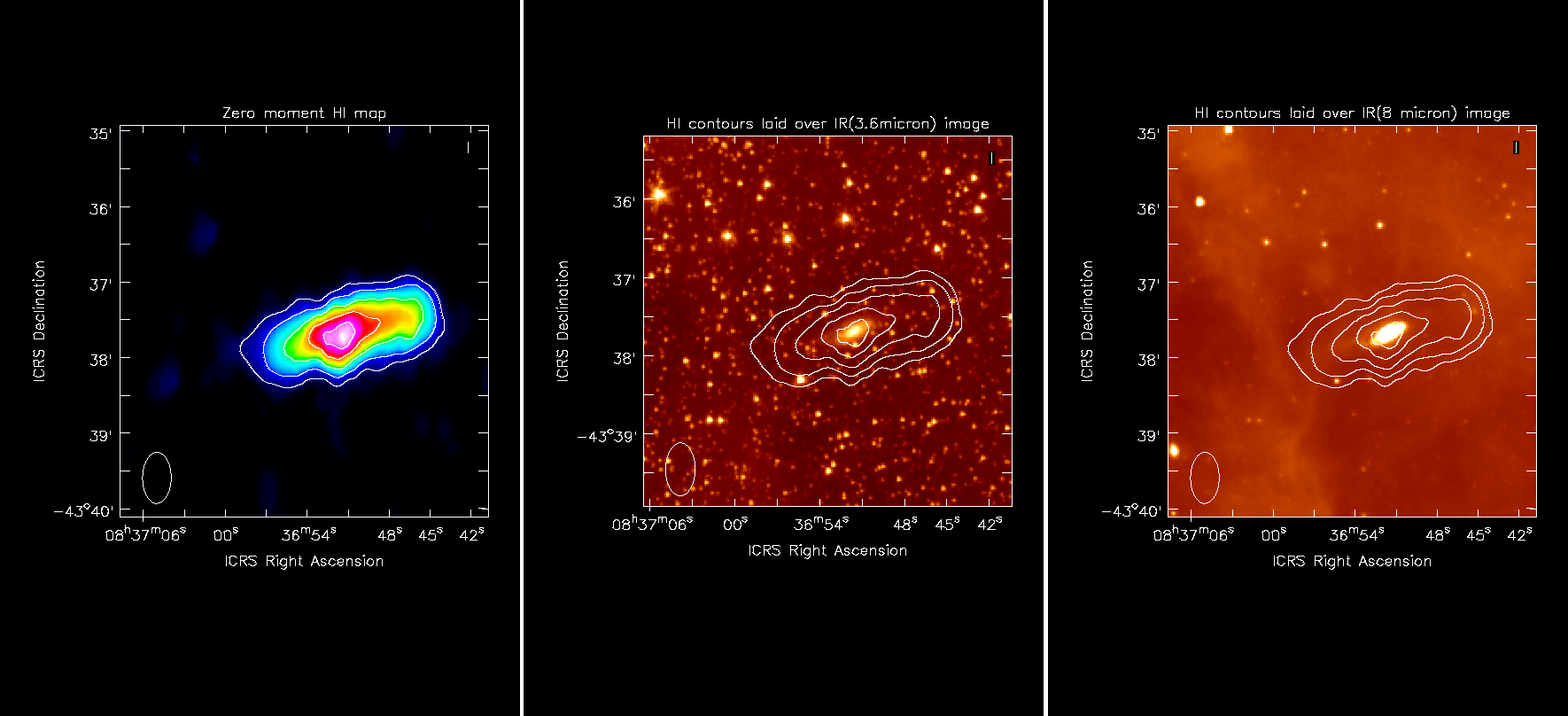Daily Image
23-08-2016HIZOA J0836-43: A Remarkable HI Massive Galaxy
| Submitter: | ANOJ KHADKA |
| Description: | HIZOA J0836-43 is an HI massive galaxy hidden by the galactic dust and Vela supernova remnant in the southern sky. Its high star formation rate (SFR ~20MΘ/yr) combined with the huge HI gas reservoir makes it interesting for understanding the relationship between the gas dynamics and star formation going on inside it which ultimately can shed light into galaxy formation and evolution models. In these images I have laid HI (Neutral Hydrogen) contours over the IR (infrared) images to understand the distribution of HI gas in the galaxy. As one can see, in both the images distribution of the HI gas is much more extended beyond the central star forming regions indicated by bright emissions at the center. Data to make these HI contours out of zero moment map was taken from observations made from ATCA (Australian Telescope Compact Array). Contour levels moving outside in are at 20, 50, 90, 135, 170 times the rms value for noise (0.014). Corresponding HI column densities for the contours are 0.36, 0.88, 1.60, 2.40 and 3.02 times 1021 atoms/cm2. Laying HI contours over the IR images helps us to know how the distribution of gas is in the galaxy and in which regions the star formation is concentrated. It also helps us to identify any possible merger interactions or companion galaxies nearby. These two infrared images taken at 3.6 micron and 8 micron wavelengths by IRAC (Infra-red Array Camera) on the Spitzer space telescope tell us about the star formation/old stars and the emission from PAH (Polycyclic Aromatic Hydrocarbon) molecules occurring in the galaxy respectively. |
| Copyright: | Anoj Khadka |
| Tweet |  |
